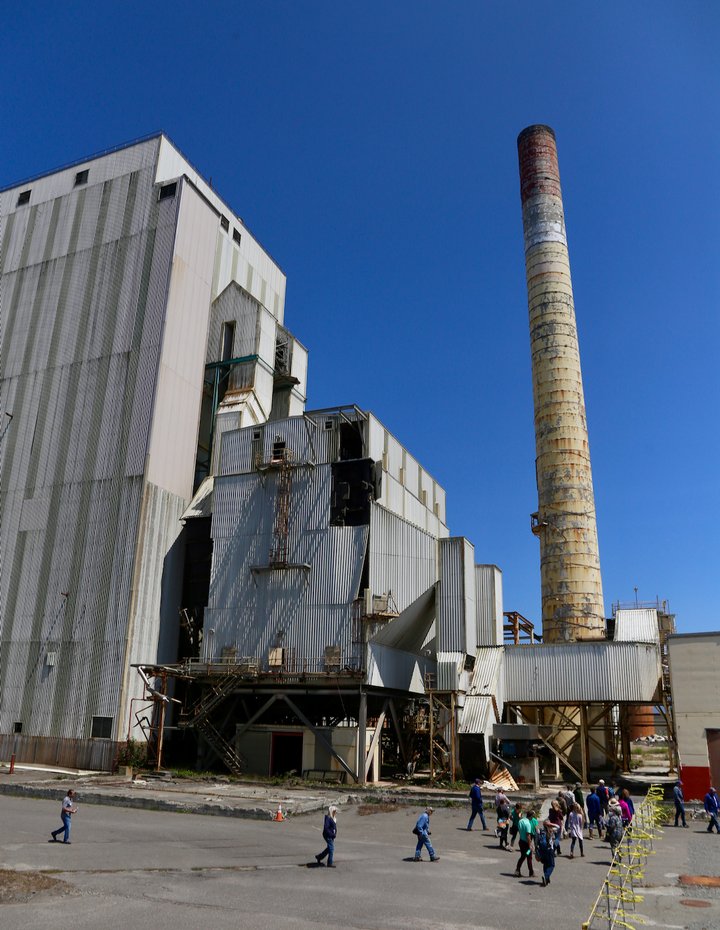
The former pulp mill property on the Samoa Peninsula includes towering infrastructure such as the 270-foot-tall boiler building and adjacent smokestack, all of which is slated for demolition to make way for Nordic Aquafarms’ proposed recirculating aquaculture system (RAS). | Photos by Andrew Goff except where noted.
###
Executives from Nordic Aquafarms were busy this week giving a series of tours out on the Samoa Peninsula, offering politicians, environmentalists, fishermen and others an up-close view of the dilapidated industrial site — home to the corroding remains of the Evergreen Pulp mill — where the company plans to build a large, land-based fish farm.
The draft environmental impact report for the project is still being prepared, so some of the details remain in flux. But here’s a quick recap of the project as proposed.
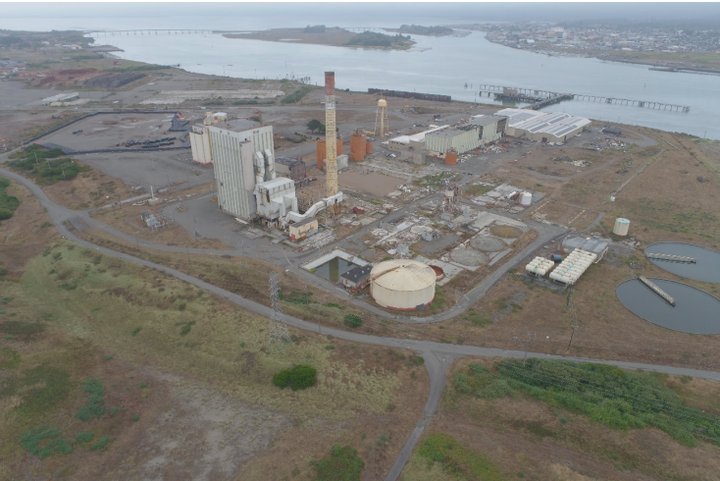
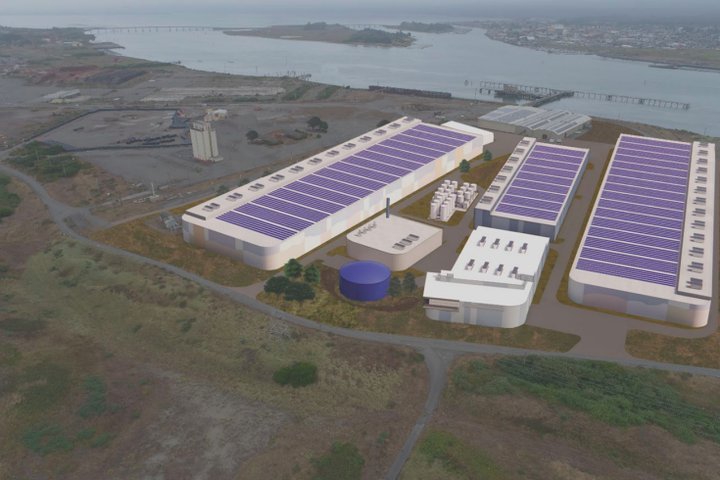
TOP: Aerial view of the former Samoa pulp mill site, now known as Redwood Marine Terminal II. BOTTOM: A simulation of the proposed Nordic facilities. | Images via County of Humboldt.
The five-building facility, totaling some 766,530 square feet, would include two massive production modules where all-female Atlantic salmon would be raised inside fully-contained recirculating aquaculture systems (RAS). Eggs would be imported, hatched in a dedicated facility and raised to juveniles, then transported via underground pipes to “grow-out modules” where they’d reach market size, eventually producing up to 27,000 metric tons of fish per year for distribution to markets up and down the West Coast. (The company is also developing a facility in Maine for distribution to East Coast markets.)
Nordic executives say the company aims not to compete with local fishermen but rather to supplant the huge supplies of fish currently being imported from overseas.
Seawater — 10 million gallons per day — would be drawn in from Humboldt Bay via existing sea chests, slated to be retrofitted with fine-mesh screens to prevent impingement and entrainment of sea life. The facility would also require up to 2 million gallons per day of fresh water, which the Humboldt Bay Municipal Water District (HBMWD) has agreed to provide.
Treated effluent — 12.5 million gallons per day — would get pumped out to the Pacific Ocean via an existing 1.55-mile-long outfall pipe, which the Simpson Paper Company was made to install following a 1989 Clean Water Act lawsuit brought by the nonprofit Surfrider Foundation.
Nordic’s planned wastewater treatment facility would remove 90 percent of the nitrogen and 99 percent of the phosphorus prior to discharge, according to the company’s published plans, though some environmental advocates have expressed concerns about potential impacts to ocean habitat. At a tour on Thursday, Marianne Naess, the company’s executive vice president of commercial operations, said Nordic will agree to independent monitoring of the effluent.
Prior to beginning construction, Nordic plans to spend an estimated $100 million on clean-up, remediation, demolition and various site improvements, including tsunami/earthquake safety measures.
As you’ll see in the photos below, the property remains occupied by crumbling buildings and infrastructure, much of which contains hazardous materials such as lead and asbestos. It’s a former brownfield now owned by the Humboldt Bay Harbor, Recreation and Conservation District. More than 3 million gallons of toxic pulping liquors were hauled off in 2014 with help from the EPA, but much more cleanup is needed.
Jennifer Kalt, executive director of environmental nonprofit Humboldt Baykeeper, said her organization still has concerns about whether the project can be completed in a way that protects the ecosystems of Humboldt Bay and the nearby Pacific. But after touring the site on Wednesday, she said in a Facebook post that the project would include not only much-needed cleanup but also construction of a modern stormwater system.
“As it stands today, every major rainstorm carries polluted runoff into the bay,” the post reads. “And the way our legal system works, it will stay that way until someone invests in the cleanup. Nordic estimates it will cost $10+ million to demolish and remove everything. Sure, the Harbor District can continue applying for EPA Brownfields grants, but at $250,000 apiece, it would take several lifetimes.”
The Outpost tagged along on Wednesday’s tour and snapped some photos, which you can see below. For more details on the project, see this post or you can contact Nordics local community liaison Lynette Mullen at Lynette.mullen@gmail.com.
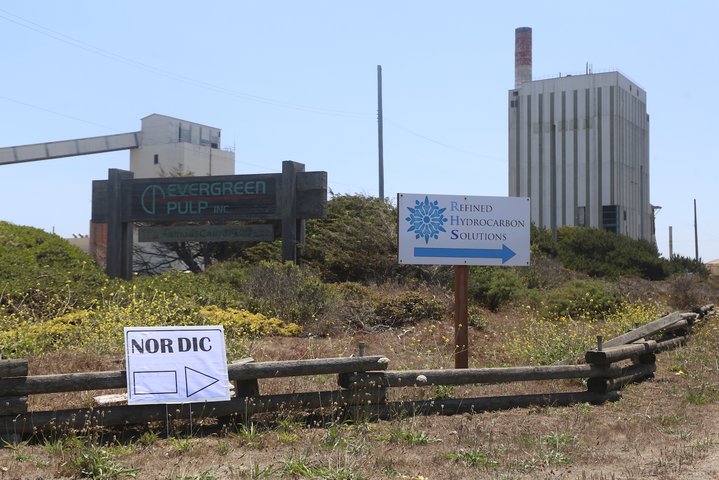
A simple sign bearing the name Nordic directs people to the parking area for a tour.
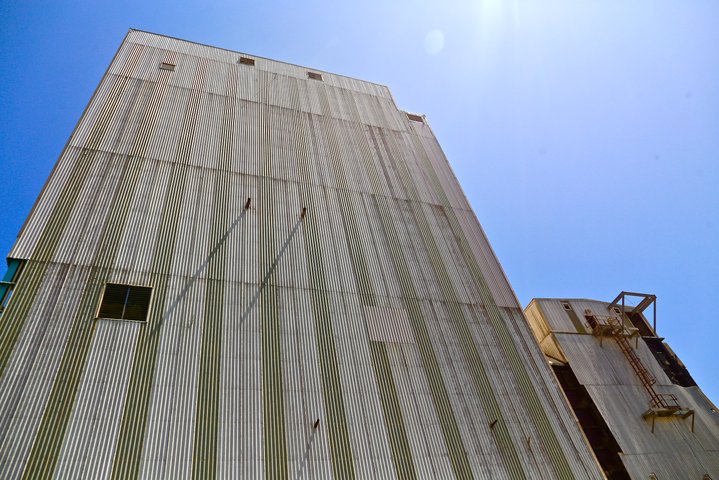
Corrugated metal siding has been falling off the boiler building.
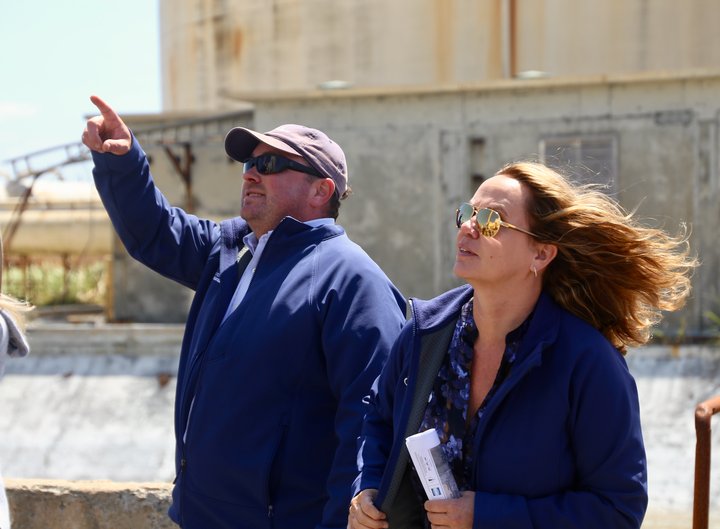
Nordic’s local project manager, Scott Thompson, and executive vice president of commercial operations, Marianne Naess.
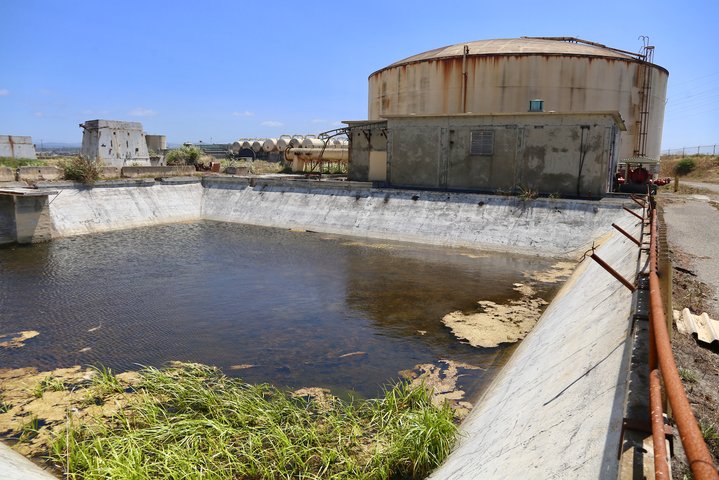
On open pool where the pulp mill stored toxic pulping liquors.
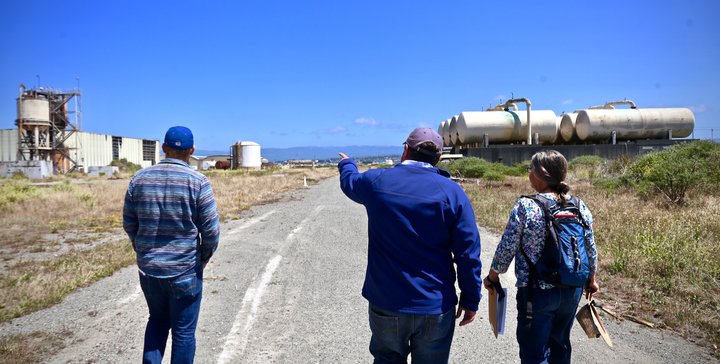
Thompson leads tour attendees around the property.
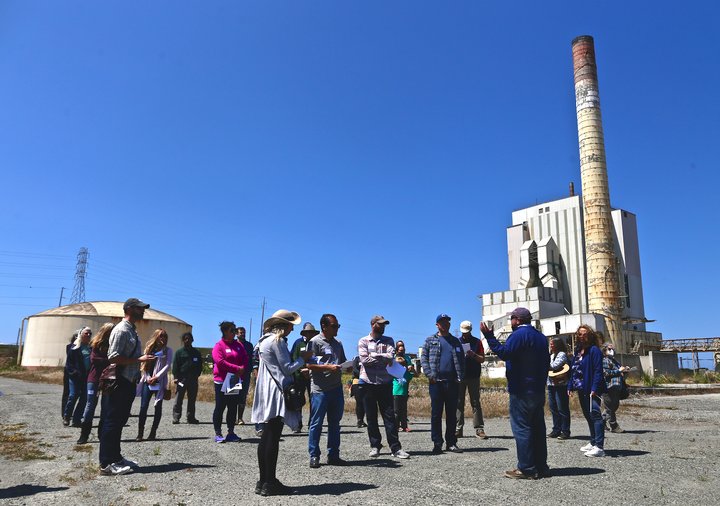
Nordic executives led a group made up primarily of representatives from local environmental groups.

David Noyes, Nordic’s vice president of technology, speaks to the group with tile-lined tanks from the former pulp mill in the background.
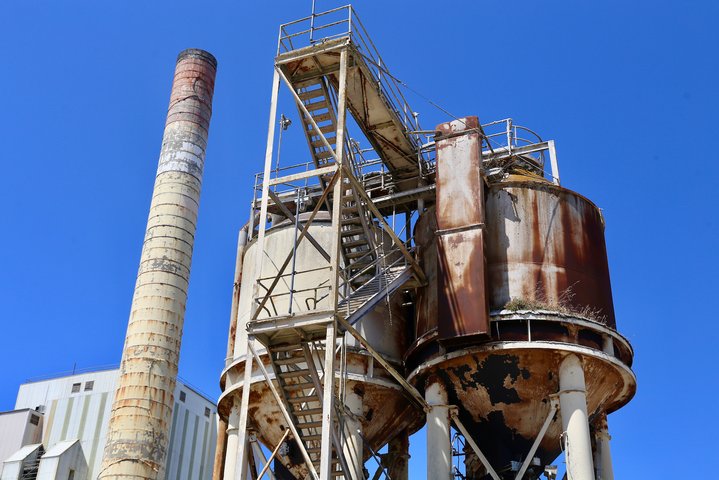
More rusting infrastructure slated for demolition.
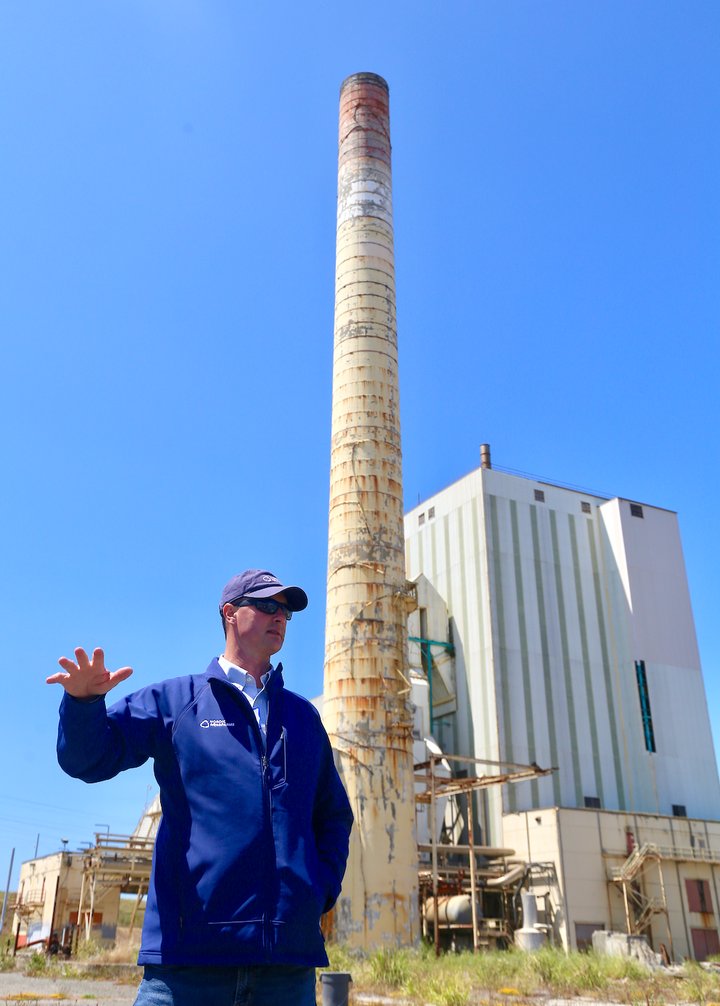
Noyes and smokestack.

Much of the scrap metal and debris left over from the pulp mill has been removed, but a good deal of it remains onsite.
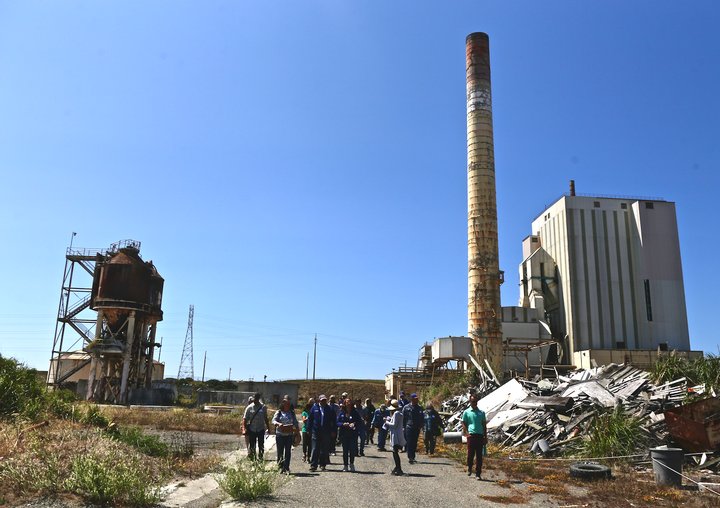
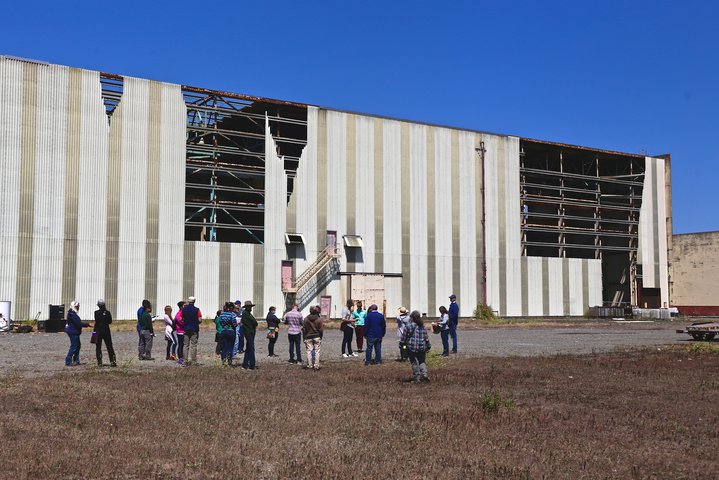
Another vacant building slated to be removed.
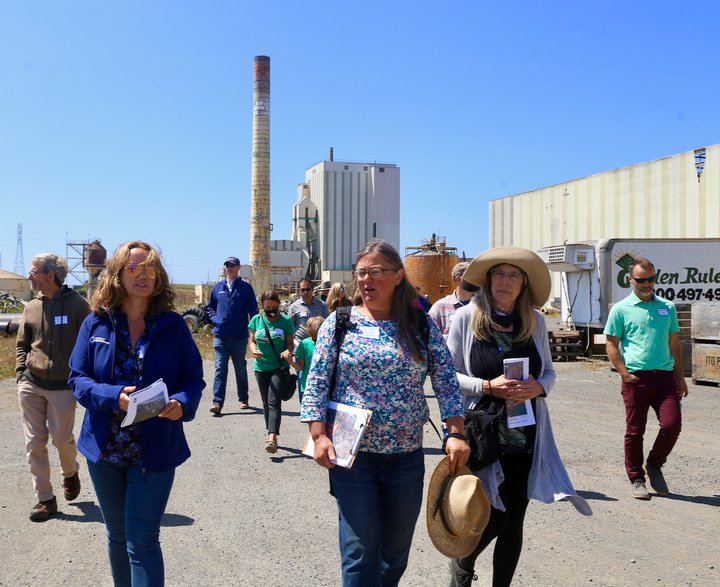
Humboldt Baykeeper Executive Director Jennifer Kalt (center) speaks with Naess (left) on the tour.
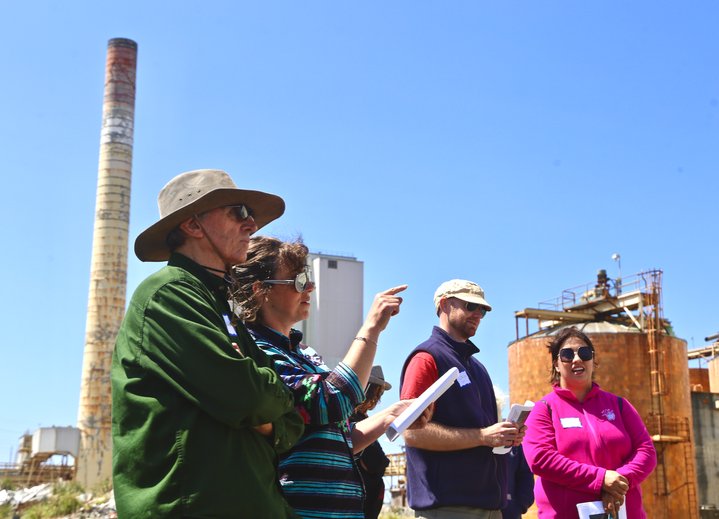
(From left) Larry Glass and Caroline Griffith of the Northcoast Environmental Center (NEC), Colin Fiske of the Coalition for Responsible Transportation Priorities and Olivia Kernen from the Humboldt County Office of Education.
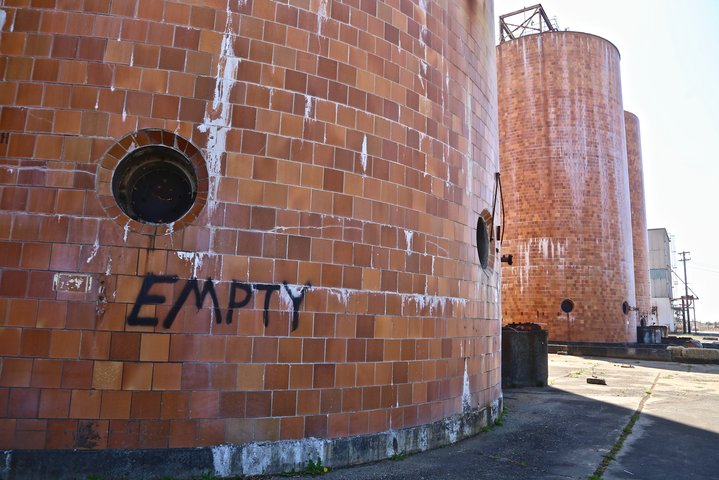
Tile-lined tanks that once held highly corrosive pulping liquors have since been emptied.
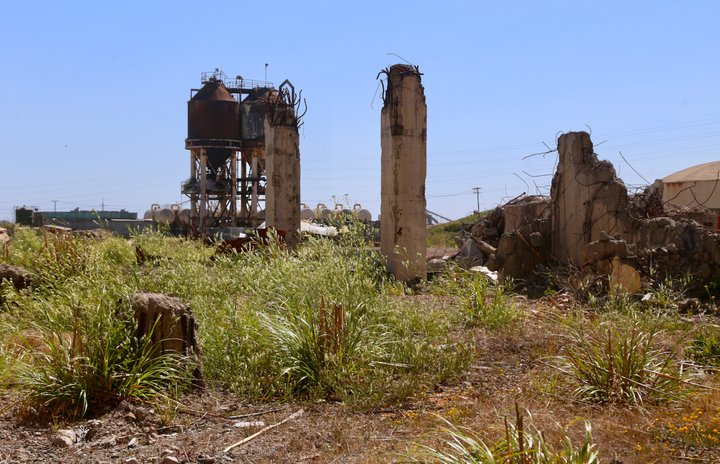
Plant life springs up amid crumbling concrete and twisted rebar.

The smokestack.
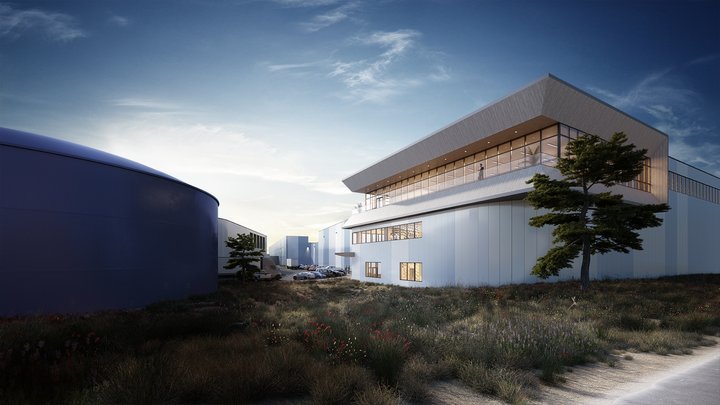
A computer simulation showing Nordic’s planned administrative building and a replaced water tank with RAS facilities in the background. | Image courtesy Nordic Aquafarms.
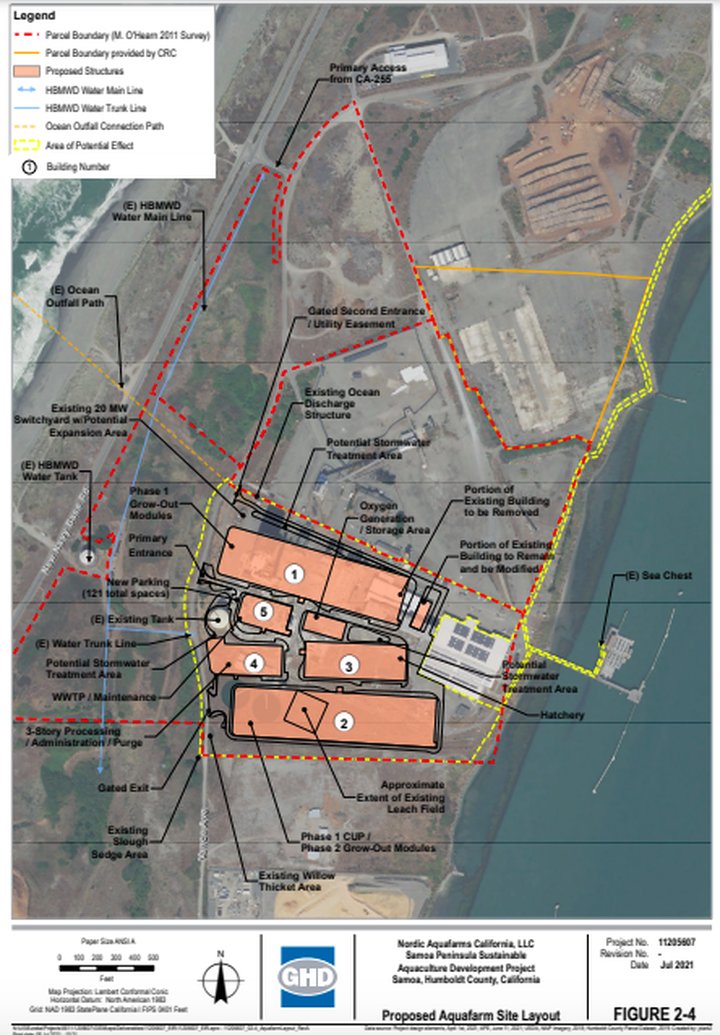
Schematic of the planned layout. For a high-resolution pdf, click here.
CLICK TO MANAGE